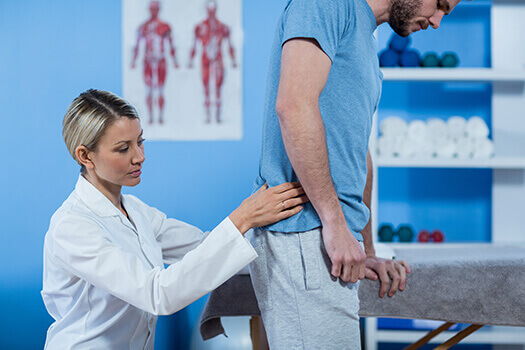Pain in the Tailbone: Causes, Symptoms, & Treatment
source of pain. Better known as the tailbone, this pelvis-supporting part of the spine—which is attached to various muscles and other soft tissues—sometimes contributes to discomfort that can range from mild to severe. If you’re finding it increasingly difficult to sit down and relax after a hard day, continue reading to learn more about tailbone pain (coccydynia) and how it's usually treated.What Causes Tailbone Pain?
The tailbone of the human spine is made up of 3–5 bones that are partially or almost completely fused together. While the very end of the spine is designed to handle added stress and strain fairly well, it's still susceptible to damage from natural wear, trauma, and, in women, the added pressure caused by pregnancy and childbirth. Tailbone pain may also develop due to:- Hard falls affecting the lower back/buttocks
- Long periods of sitting
- Age-related disc or joint wear
- An excessively mobile joint located at the base of the tailbone by the sacrum (sacrococcygeal joint)
- Bone spurs
- Spinal infections
What Symptoms Might You Experience?
Tailbone pain is usually felt within the affected area. Discomfort may extend to the lower back or move downward into the buttocks, hips, and thighs. Coccydynia usually becomes worse when seated. You may also notice numbness and general muscle weakness within the affected area.How Is Coccydynia Diagnosed and Treated?
Diagnosis of tailbone pain usually involves a discussion of the symptoms and an examination of the affected area. If a fracture is suspected or another underlying issue may be contributing to your discomfort, some type of image test will likely be performed. For fractures, an X-ray is usually all that's necessary. However, other image tests may be done if there’s a need to view soft tissues within the tailbone area.Treatment for tailbone pain often involves a combination of conservative options. This approach to treating coccydynia is more likely to be recommended if your discomfort is in the mild to moderate range. Non-surgical remedies for tailbone pain typically involve:
- Using a seat/rear cushion to take pressure off the tailbone as it heals
- Applying ice and heat to reduce inflammation and increase circulation
- Taking over-the-counter anti-inflammatory drugs, such as aspirin
- Doing exercises that target and strengthen the muscles around the tailbone/lower back
- Resting now and then to give the tailbone time to heal without placing excess stress on it
Additional treatment may be necessary if underlying issues are detected. Even if you do have a tailbone fracture, the broken part of the bone may heal on its own with conservative care and periodic observation.
It's rare to need surgery for tailbone pain, but if a fracture in your tailbone becomes displaced or nearby structures such as your spinal cord are affected, it may become necessary for a Los Angeles spine surgeon to stabilize the end of your spine. Fortunately, most people with coccydynia respond well to a combination of the non-surgical treatments discussed above. One way to reduce your odds of being affected by tailbone pain is to watch your posture as you sit and sleep.
If you’re experiencing severe, sudden, or prolonged pain in your tailbone or any other part of your spine, reach out to the pioneering spine specialists at The Spine Institute. Our physicians are industry-leading experts in every aspect of spinal health. Give us a call today at 310-828-7757 to schedule a consultation.

Comments
Post a Comment